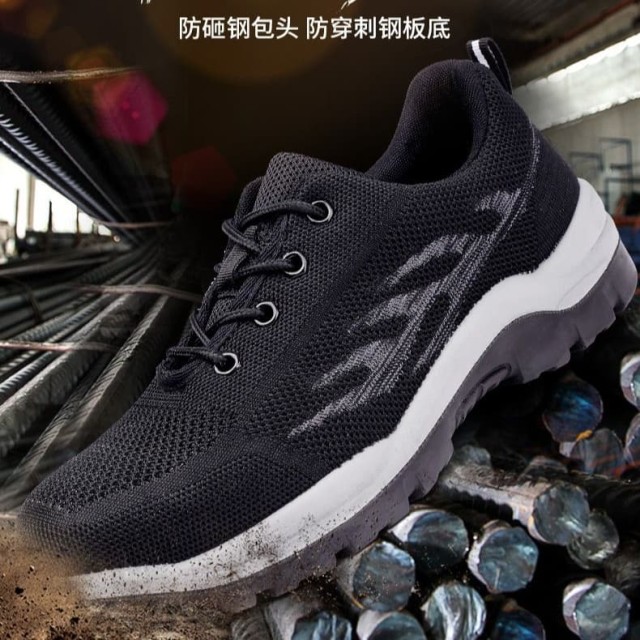Workplace foot injuries account for approximately 7% of all occupational wounds—a preventable statistic with proper standardization. This article decodes the complex ecosystem of safety footwear regulations, from OSHA’s enforcement to ASTM and ISO technical specifications, helping procurement teams and manufacturers navigate compliance confidently.
The Hierarchy of Safety Footwear Standards
OSHA's Regulatory Authority in Workplace Protection
The Occupational Safety and Health Administration (OSHA) mandates employer compliance with foot protection standards (29 CFR 1910.136). While OSHA doesn’t certify products, it enforces the use of footwear meeting ASTM F2413 or equivalent standards. Key requirements include:
- Impact resistance (75 ft-lbs compression test)
- Puncture-resistant soles (tested against 270 lbs of force)
- Electrical hazard protection (non-conductive materials)
Non-compliance penalties can exceed $15,000 per violation, making adherence non-negotiable for high-risk industries like construction.
ASTM International's Technical Standard Development Process
ASTM F2413 sets the benchmark for U.S. safety footwear, with updates every 5–8 years. The process involves:
- Hazard identification: Committees analyze injury reports to refine test methods.
- Performance tiers: Ratings like "I/75" (impact resistance) and "PR" (puncture resistance) denote protection levels.
- Third-party validation: Independent labs verify manufacturer claims.
Unlike OSHA, ASTM focuses on how footwear performs, not where it’s used.
Global Counterparts: ISO and EN Standards
For international markets, EN ISO 20345 (Europe) and ISO 20347 (global) dominate:
- EN ISO 20345: Mandates toe caps (200J impact resistance) and slip resistance—common in EU construction. The 2022 revision added water penetration tests.
- ISO 20347: Covers occupational shoes for low-risk settings (e.g., healthcare), emphasizing comfort over toe protection.
Industries operating transnationally often require dual ASTM/ISO certification.
Ensuring Compliance Across Industries
Step-by-Step Certification Process for Manufacturers
- Design phase: Engineers select materials meeting target standards (e.g., steel vs. composite toe caps).
- Prototype testing: Samples undergo lab simulations (e.g., metatarsal guard tests).
- Production audits: Factories must prove consistent quality—failed batches can lose certification.
For bulk producers like 3515, this process ensures scalability without compromising safety.
Industry-Specific Requirements
| Industry | Key Standards | Special Needs |
|---|---|---|
| Construction | ASTM F2413, EN ISO 20345 | Electrical hazard + insulation |
| Oil/Gas | ASTM F2413, EH rating | Static dissipation ( |
| Manufacturing | ISO 20347 | Slip/oil resistance |
Procurement teams should cross-reference job hazard analyses with these benchmarks.
Implementing Standards in Procurement
How to Verify Compliance Labels
Legitimate footwear displays:
- ASTM: "ASTM F2413-XX" (year) with clearly marked ratings (e.g., "Mt/75" for metatarsal protection).
- ISO: A shield icon with "EN ISO 20345:2022" and "SB" (basic safety) or "S1–S3" (enhanced features).
Beware of counterfeit labels—always request test reports from suppliers.
Cost vs. Safety: Avoiding Compliance Greenwashing
Cheaper "safety-style" boots may lack critical protections. Prioritize:
- Multi-hazard coverage: A boot with "EH" (electrical hazard) and "SD" (static dissipative) ratings costs ~20% more but reduces injury risks by over 60%.
- Lifecycle value: ASTM-compliant soles last 2–3× longer in abrasive environments.
For distributors and brand owners, partnering with certified manufacturers like 3515 ensures bulk orders meet regional standards cost-effectively.
Upgrade Your Safety Footwear Strategy
Navigating standards is complex, but non-compliance risks lives and profits. Whether you’re a distributor sourcing globally or a factory manager auditing PPE, 3515’s expertise in standardized safety footwear production helps you meet OSHA, ASTM, and ISO requirements seamlessly. [Contact our team] to discuss compliant solutions tailored to your industry.
Products You Might Be Looking For:
View OSHA-compliant steel toe work boots
Explore customizable safety footwear for industry standards
Related Products
- Wholesale Customizable Suede Safety Boots - Puncture-Proof with Velcro Closure
- Wholesale Durable Camo Canvas Shoes with High-Traction Rubber Soles
- Puncture-Resistant Velcro Safety Boots for Wholesale & Custom Manufacturing
- Customizable Anti-Smash Safety Boots for Wholesale & Private Label Manufacturing
- Wholesale Mesh Steel Toe Safety Shoes with Dial Closure Factory Production
Related Articles
- Steel Toe Work Boots: Balancing Safety and Comfort for Demanding Jobs
- How Safety Work Boots Engineer Protection: Features and Standards for Targeted Hazard Mitigation
- How to Choose Work Boot Materials for Maximum Safety and Durability
- Matching Men’s Work Shoe Safety Technologies to Workplace Hazards
- How to Choose Work Boots That Match Your Job's Safety Demands



















